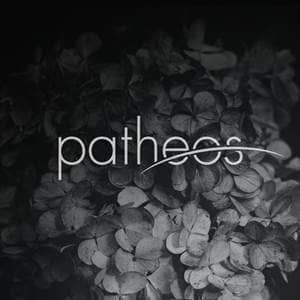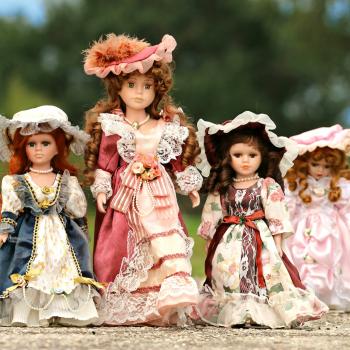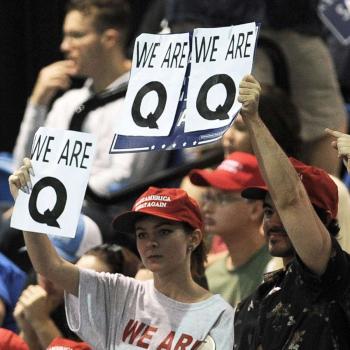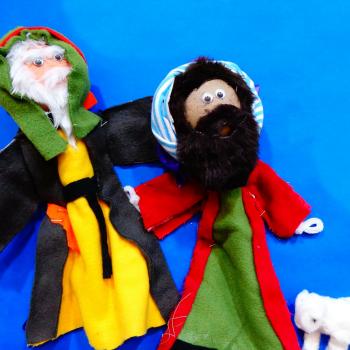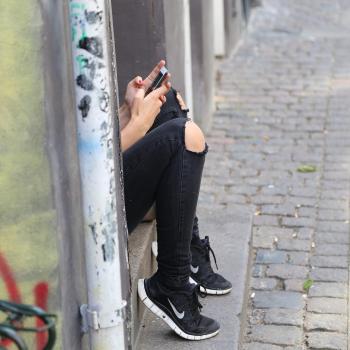Now five years old, Sally has been working overtime trying to differentiate between “real” and “pretend.” She has finally determined that fairies and magic are not real. I’m not completely sure how she determined this, but it matters a lot to her right now. This is a natural stage of development for children her age, this desire to distinguish between “real” and “pretend.” Still, part of me is a bit nostalgic. I liked her fantasy world in which fairies were as real as kittens. I mean, at one time she actually thought the Doctor could come and help out if we could find a way to send a message to his psychic paper. Seriously, how cool is that?
We decided early on to let Sally work out what was “real” and what was “pretend” on her own, rather than simply telling her. When she would ask, as she eventually did, we would ask her what she thought. If pressed, we would point her toward the scientific method (though we never used that term itself), once again prodding her to consider for herself. At one point she concluded that fairies were real because there were movies with fairies in them, so they must be real.
I don’t know what exactly it was that made Sally ultimately conclude that fairies were not real. I do know that watching her continue to work this out has been fascinating.
“Mom, this can prove that there’s no magic,” Sally told me recently. I was sitting on the couch, and she touched my head with her pink fairy wand. “Poof!” she said. “See, you’re still human.”
“Maybe you’re just not doing it right,” I suggested.
Sally paused and considered. “Okay,” she said. She touched me with her wand again. “Abracadabra!” she said. “See, you’re still human. Magic is not real.”
Only the day before this incident we had watched a princess movie that involved mythical creatures and magic, and at one point the main character performed magic. “That means this is not a real movie,” Sally had said. But even as she had at some point determined that magic signaled not real, it seems she wanted to find ways to test this conclusion, treating it as a hypothesis of sorts. Hence the wand test. I understand that this is the natural next step in Sally’s development, but sometimes I do miss the days when Sally and I would build fairy houses for fairies she was sure were real.
Yesterday Sean and I took Bobby outside to sit in the grass in front of our home and enjoy the sun, leaving Sally inside. She had fallen asleep for a late nap, and we didn’t want to wake her. Then she woke up while we were still outside and found herself completely alone in the house. After checking each room she looked out the windows and saw us outside but was unable to open the door on her own. After a few minutes we saw her face in the window and let her outside. She had been crying, but she assured me that she had not been too scared.
“When I realized that I was all by myself I was scared,” she told me. “But then I thought to myself that monsters are not real, and I was not too scared.”
Sally has let go of the reality of fairies, but she has also let go of the reality of monsters. I suppose this is a good thing, given her recent interest in the horror genre. I checked a stack of books of fairy tales and folklore out from the library last month, and the one she latched onto was a compilation of “freaky tales” from around the world. It’s sort of paradoxical. The stories freak her out and yet she asks Sean and I to read them again, and again, and again. She’s asked me to check out more books even scarier than this one. I recently read her the original version of The Little Mermaid. She wanted to know why it was different, and I told her it was because Disney didn’t think children could handle the original ending. Sally was incredulous.
But now I feel like I’m getting off track. The point I’m trying to get to is that even as Sally explores the line between “real” and “pretend,” I want her to understand that this line is not all that matters. I want her to understand that truth and fiction involve more than simply whether something actually happened—and that whether a story actually happened can sometimes be the less useful and interesting question. So after her wand experiment I put a question to her.
“What does “real” mean?” I asked.
“Real means when something is real,” she told me.
“But what does real mean?”
“When something is real, that is real,” she said matter-of-factly.
“I still don’t understand,” I told her. “What does “real” itself mean?”
“I can’t explain it,” she said finally.
So I shifted gears. “What does pretend mean?” I asked.
“It means when someone says that something is real but it’s not actually real.”
“But then what does real mean?” I asked again.
“I don’t know how to explain it,” she said.
“When you say real, do you mean something that actually happened?” I suggested.
Sally nodded, seeming pleased that I had found a way to articulate it.
“Is Frozen real?” I asked her.
“No,” she said. “People just made it up.”
“Do we learn something from it anyway?” I asked.
“Yeah.”
“What do we learn?”
“That fear makes you not learn anything,” she told me. “Fear is real,” she added.
“So fear is real, but the story of Frozen isn’t?”
“Yeah.”
“So can we learn things from pretend stories?”
“Yeah.”
“Why do you think people tell stories about magic?” I asked.
“They think magic is real,” she said. “But it’s not.”
“But do you think some people tell stories about magic even though they don’t think it’s real?”
“Mom, quit asking questions,” Sally said, bored.
I suppose I was asking for that. The five-year-old attention span does not last forever.
Ultimately, I want Sally to understand that we derive meaning in stories, and that stories can be in some sense “real” without having actually happened. I suppose I dislike the fundamentalist insistence that stories must either have literally happened or else be pointless. As a child I was taught that the stories in the Bible all literally happened, and that if they hadn’t actually literally happened the entire Bible and our entire belief system would crumble like sand. But is that really true? I think not. Stories can have worth and meaning and speak to the richness of human expression without being “real” in a literal sense. We can derive meaning from myth even if the stories involved never actually happened.
Still, I don’t want to take away from Sally’s scientific exploration of what is “real” and what is “pretend.” Indeed, I intend to foster scientific interest on her part. Sally’s homemade “scientific” way of testing whether magic is or is not “real”—embodied in her wand test—was fascinating. But of course, this single test was not actually all that credible, and Sally has more to learn about the scientific method and how we test things. Unfortunately, I made the mistake of attempting to engage her on this topic only a few minutes after our earlier conversation.
“How do you know that magic is not real?” I asked her.
“No more questions!” Sally burst out.
I suppose you’ll have to stay tuned.



